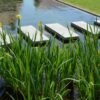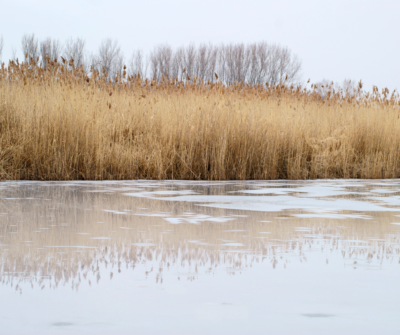Ponds that are healthy can also be ecosystems with many different types of animals and plants, perhaps more than in any other part of the world. Many animals, such as fish, spend all of their lives in a pond, but many others inhabit the pond for only a short period of time.
Ponds are small, stagnant bodies of water that are smaller than lakes. Nature can create ponds or humans can construct them. In the pond water, you will find marsh plants, aquatic animals, and various aquatic organisms. Water level, food level, plants, harmful animals, light, salinity level, etc., all influence the activities of various animals. A majority of ponds can allow sunlight to penetrate to the bottom depending on the depth of the water.
Pond ecosystems: Meaning and significance
A pond is a body of water, whether it is natural or artificial. Ecosystems are communities of organisms. pond ecosystems refer to freshwater ecosystems that provide the environment for various organisms to survive and to meet their nutritional needs as well. Water bodies, called ponds, are usually 12-15 feet deep where sunlight can penetrate and result in the growth of plants. Biological and abiotic elements make up the ecosystem of a pond. Producing, consuming, and decomposing are biological components, while organic and inorganic materials constitute abiotic components. There is a food chain for biotic components.
Ecosystems are living communities of organisms dwelling and interacting within a specific environment.
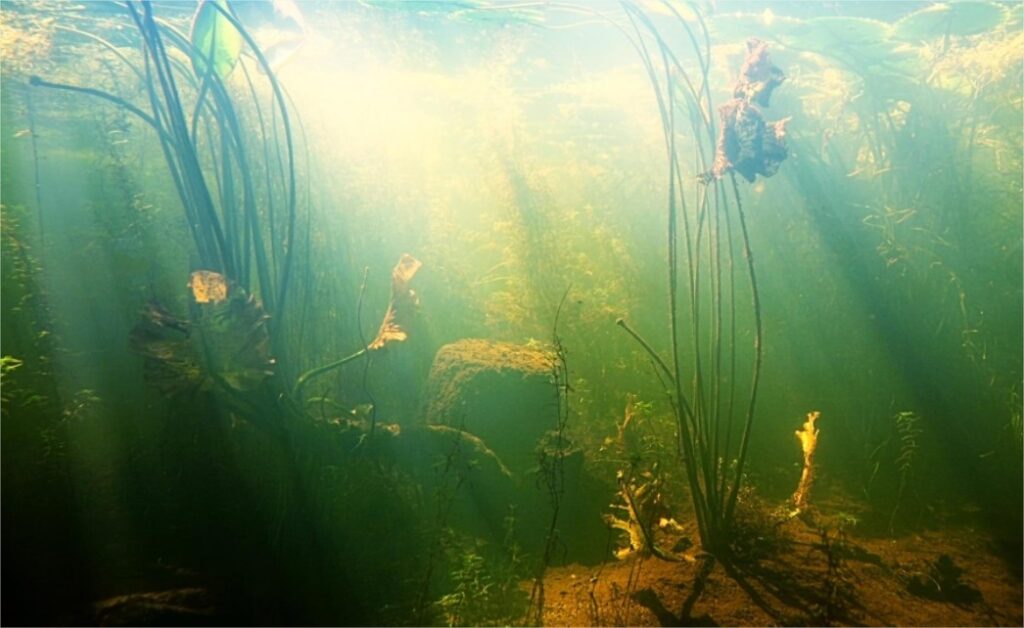
Ecosystem Lentic: Pond ecosystems are classified within the ecosystem Lentic. There are many types of lentic and lacustrine ecosystems including seeps, seasonal pools, ponds, basin marshes, ditches, swamps, and lakes.
Depending on their food and survival needs, lakes and ponds are popular as freshwater ecosystems. A pond is a shallow body of water about 12–15 feet deep. Ponds can enhance plant growth as they allow enough light to penetrate.”
Pond Ecosystems: Types
Pond Ecosystems are freshwater ecosystems further divides into three zones such as littoral zones, open water zones, and deep water zones. Light travels down the littoral zone, allowing the plants to grow because sunlight follows the path of the sun.
There is a zone of open water famous as the pelagic zone. The zone between the bottom of the ocean and the shoreline where the water is not close to the bottom. This is the lowest level in the ocean above the thermocline. It is possible to understand these three types deeply. In other cases, Pond Ecosystems are differentiated in another way. A pond can be classified into five types: saltwater pond, garden pond, freshwater pond, vernal pond, and underground pond. Salt ponds are brackish water reservoirs located by the seaside. An artificial pond is one that is present in a garden. Anywhere can form a freshwater pool when it rains. In winter, vernal ponds form as a result of ground depressions and are seasonal. Additionally, there are underground ponds emerge by rock formations.
Among pond ecosystems, there are garden ponds, salt ponds, fishponds, ephemeral ponds, freshwater ponds, kettle ponds, and mountain ponds.
Garden ponds
Artificial or man-made ponds are garden ponds. Various ornamental plant and animal species (backswimmers, water beetles, pond snails, etc.) are accommodated in these ponds. A garden pond is generally an enclosed ecosystem. The creatures receive materials from outside, such as rain and leaves, and export different species at larval stages.
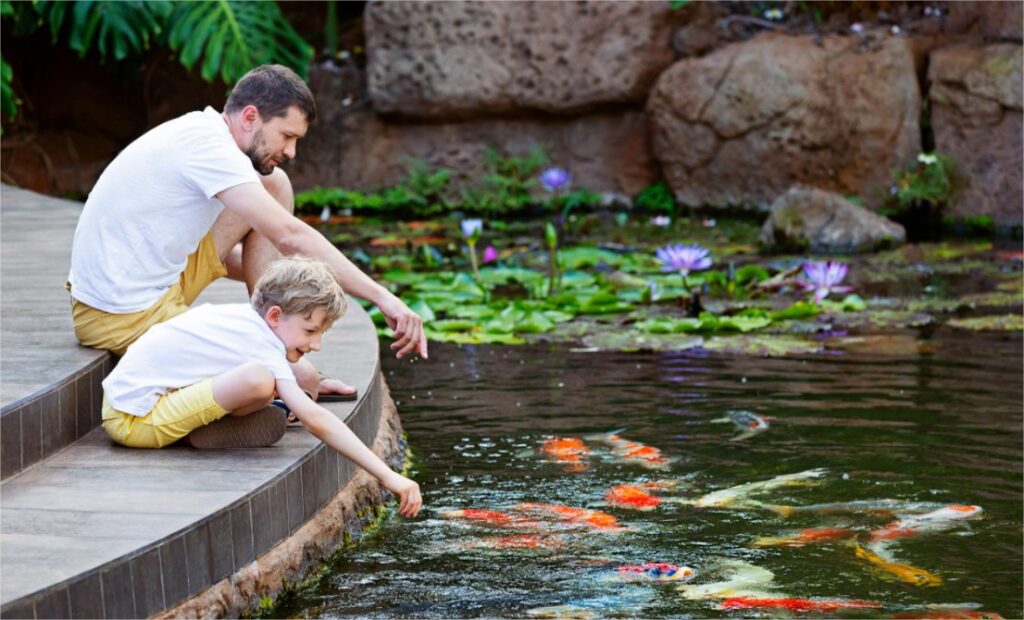
Salt Ponds
Salinity is a key component of salt ponds. It can be found near the seaside where natural pools are formed by waterlogging. In addition to salt ponds, rock pools can also appear along sandy beaches.
Freshwater Ponds
Water can pool anywhere, either by precipitation or by saturation of the soil by water. Rivers can create them when they flow into a ground depression.
Kettle Ponds
When a glacier retreats, it creates a depression in the ground that becomes a kettle pond. As glaciers detach and enter the ground, they slowly melt and form pools and ponds that contain glacial sediment. Usually, they can be found near mountainous areas, such as prairies and savannahs.
Mountain Ponds
In mountainous regions, there are mountain ponds. Rock shifts, runoff from water, and melting snow combine to form these formations. There are a number of rare and endangered species living in these pond ecosystems.
Fish Ponds
Pond ecosystems of this type are also common. Fish ponds are artificial ponds that have been constructed by humans. Fishes of all kinds can be maintained and hosted by them. Fish ponds require constant monitoring of pH levels, temperature, water hardness, and nutrients.
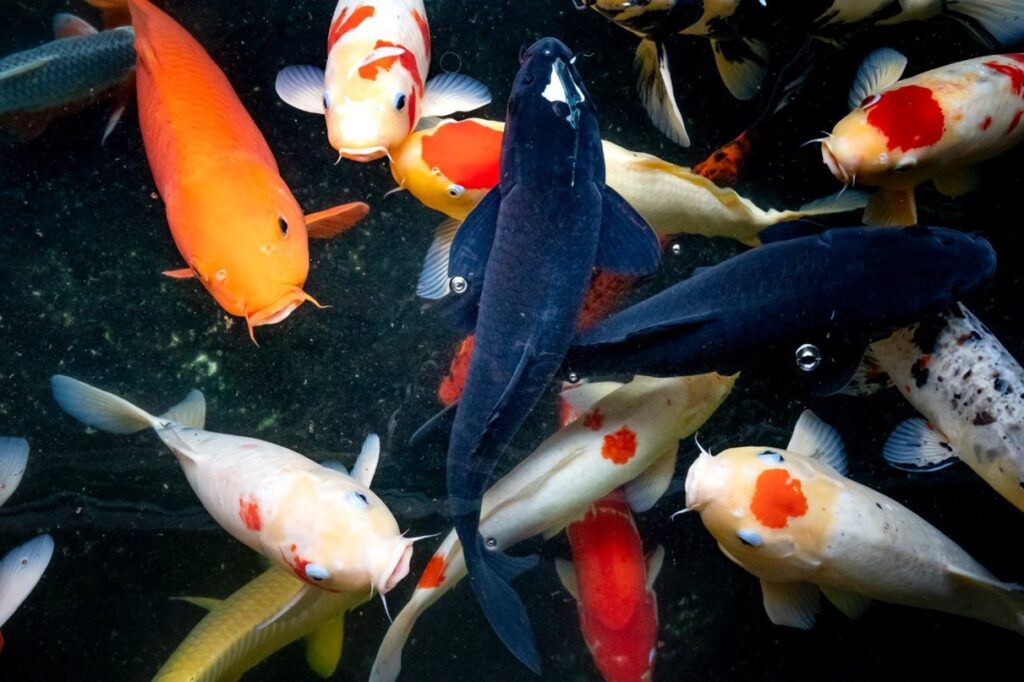
Vernal or Ephemeral Ponds
These ponds cycle and change seasonally. When the rainfall is at its heaviest, they form in depressions in the ground. Many species, including salamanders, water crowfoots, frogs, and many others, are dependent on them. Water and food are used by birds to drink and hunt.
Pond Ecosystems: Characteristics
An ecosystem is the balance of fish, bacteria, and plants that support each other. This ecosystem thrives in shallow ponds where sunlight can penetrate through the water. The ecosystem itself is alive. It is unknown what the maximum size of ponds should be. In ponds, natural and artificial banks surround the water.
Wetland plant and animal populations benefit from the ponds. Three food webs are analyzed at the same time by Pond. It is possible to find ponds without any trace of fish. Vernal ponds are known as these types of ponds. Rare and endangered species of plants are present in these types of ponds.
Charactristics:
- Water habitats at different levels-At the bottom of the pond, oxygen is very scarce; therefore, only decomposers and scavengers live there. Ponds are dominated by fish, which prey in the middle of the water. A large amount of light and oxygen shines on the pond’s surface. Here, you will find ducks and tadpoles as well as midge larvae. Insects and small animals find shelter from the elements on the pond margins.
- An ecosystem in which there is still or standing water is known as a still water pond. In addition to lakes and wetlands, it is a part of the lentic ecoregion. In comparison, a lotic ecosystem consists of flowing water like rivers and streams.
- An abiotic and biotic system contributes to a pond. The biological components include environmental factors like temperature, light, and water, inorganic elements like nitrogen and carbon dioxide, and organic elements like fats, proteins, carbohydrates, and amino acids. Primary, secondary, and tertiary producers, as well as secondary and tertiary consumers, are considered biotic components.
- A pond ecosystem is normally surrounded by artificial or natural banks.
- Three levels of stratification exist in a pond. During the day, light penetrates easily through the shallow water of the littoral zone. A limnetic zone is an area with high light penetration in open ponds dominated by plankton. A profundal zone dominates the deepest part of the pond as there is zero light penetration.
- A pond ecosystem can be very small, such as a rock pool, or it can be very large, such as a lake
Pond Ecosystems: Their Importance
There is a great deal of significance in the Pond Ecosystem. Freshwater habitats support biodiversity and provide habitat to species that need it the most. There are a number of species that live here. Farmland ponds offer us wildlife which is not a small thing to have. It doesn’t matter whether you visit a pond for fishing or to soak cartwheels, every pond has a story to tell. A pond works as a mini-reservoir that drains fields when it rains. In ponds, nutrients are recycled and phosphates and nitrates are reduced. The human race digs ponds for various purposes and uses. Plants provide animals with vegetation and drinking water during dry weather. In addition to providing hydration or inhibition, they contribute to the beauty of mother nature. Nature touches our hearts and calms us.
Conclusion
Despite being everywhere, ponds are in danger of disappearing so we must protect them and conserve them. Keeping something for future generations is something we need to keep in mind as well. It is very important to keep nature healthy by maintaining ponds, which are inhabited by many different animals.







